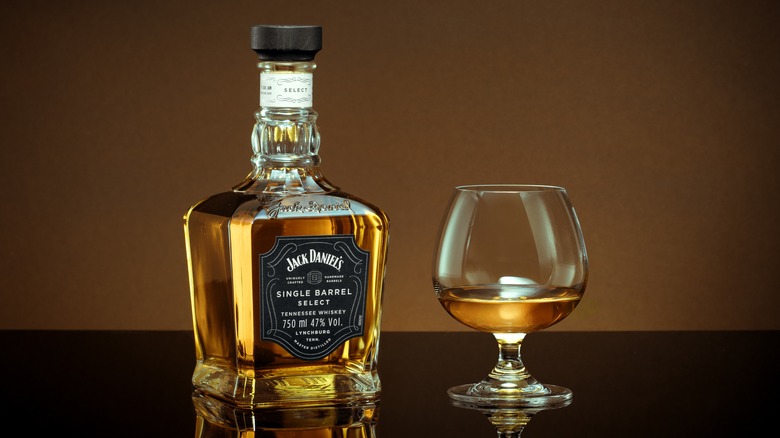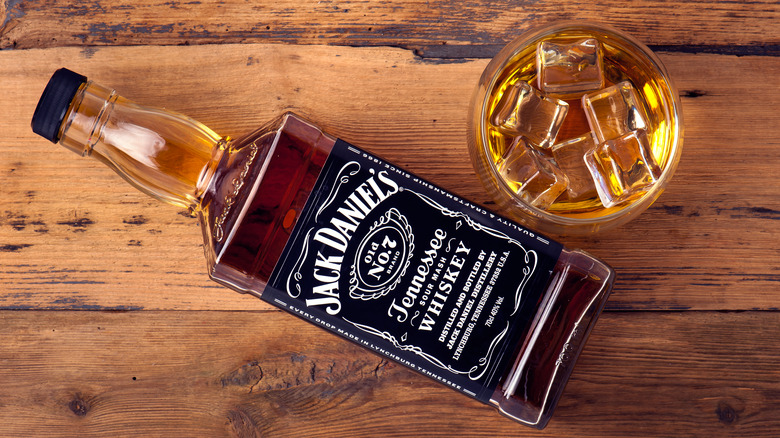Jack Daniel's Yeast Culture Is Over 80 Years Old. Here's Why That Matters
Old is literally liquid gold when it comes to Jack Daniel's. The whiskey distillery uses yeast samples dating back to 1938 to make its bottles of amber and honey-hued libations, and the company's dedication to consistency and quality is evident through the lengths the team has gone to protect these proprietary cultures. It's part of what keeps their whiskey offerings cohesive while still presenting multiple flavor options.
"We're able to continue to push new flavor profiles into it with aging and to do it in a way that pays a lot of homage to what Mr. Jack did," Jack Daniel's master distiller Chris Fletcher told Tasting Table.
Time has changed some aspects of the whiskey-making process at Jack Daniel's, yet the same charcoal mellowing, spring water, and mash have been used for over a century. Jack Daniel's doesn't simply have warehouses, however; they have labs, and scientists are hired to grow and maintain the same yeast strain used by the distillery when whiskey production resumed after prohibition. The responsibilities of this team include maintaining set temperatures for the yeast to be stored (in case of unforeseen disasters, samples of the unique culture are kept in separate locations) and adding fresh culture from the originally preserved sample when needed. Think about keeping a SCOBY alive for over a hundred years, and you get the idea of the task at hand.
A careful blend of science and antiquity
While other distilleries buy yeast from suppliers to use in the fermenting process, Jack Daniel's is proud of their scientific efforts to produce whiskey. Larry Combs, a Senior Vice President and General Manager at Jack Daniel's, explained the approach to The Boss Magazine. "Most companies don't do that; most have a commercially provided yeast. For our propagation we take yeast from the prior batch and we'll maintain that living yeast culture," he said.
And that's not all. Combs describes the scientific aspect of keeping the culture thriving through tracking and DNA fingerprints. "We add some modern technology to it: We DNA fingerprint the yeast so we can keep a very close eye on it, and we keep frozen cultures in 80-below freezers and we check that DNA profile periodically to make sure it's not drifting. If we ever do see it drift, we'll reintroduce some of that original yeast culture."
Why the dedication to this specific — and dated — yeast? Using the same yeast helps maintain a standard among Jack Daniel's and results in the expected aromatics of bottled beverages. Plus, executives at Jack Daniel's believe that commercially-bought enzymes don't yield the same tastes as those made in a lab. The next time you take a swig of Jack, you can appreciate the science and history that has come together to make the drink in your glass.

